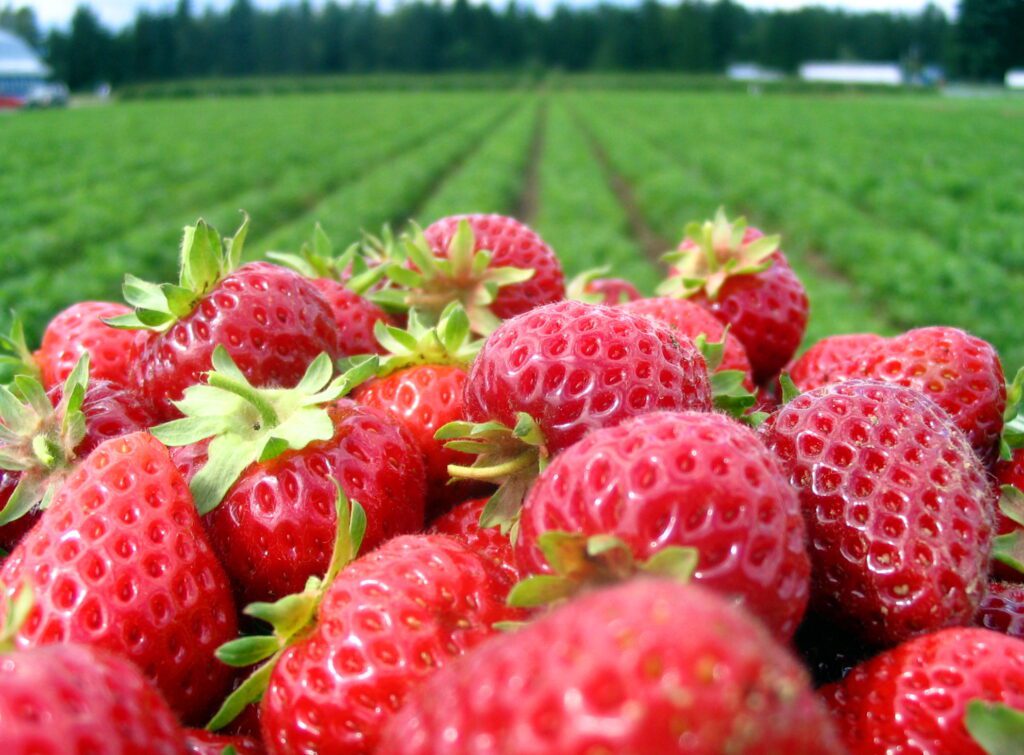by TERESA SCHIFFER
Sponsored by Farm Credit of Central Florida
Each winter, we get to celebrate the sweetness of the season with farm-fresh, Florida-raised strawberries! The juicy, naturally delightful treats of nature are big business here, bringing roughly $350 million to Florida farmers each year. More than 8,000 acres of Florida’s cropland is devoted to growing these “accessory fruits,” as they are known to botanists.
Strawberry Facts
Though most of us would agree that a strawberry is a fruit – a berry, specifically – that’s not technically the case. Scientists call strawberries an “accessory fruit” or “false fruit” (also known as a “pseudocarp”) because the succulent, pulpy part of the plant that we eat is actually multiple fruits consisting of many tiny fruits embedded in a large, fleshy flower structure.
What we call the strawberry itself is technically a greatly enlarged stamen. The 200 or so little “seeds” stuck all over the outside of the berry are the real fruits. Those are called “achenes,” and within each one of these is the actual seed. The achenes are closer in form to a nut, but not many would consider the strawberry to be in that particular family.
It’s not really necessary to know these biological details of the plant in order to recognize the value of the humble strawberry, especially in Florida. There is evidence that humans have been cultivating strawberries for thousands of years, and became established in the Americas in the early 1800s. Farmers in Florida quickly began raising the crop, and now we are the second-largest strawberry-producing region in the U.S., with only California offering up more berries each year. Plant City is recognized throughout the globe as the Winter Strawberry Capital of the World.
From November to March, Florida strawberry growers supply our nation, and beyond, with the favorite fruit of American children and adults. February and March are the peak production times, and Plant City’s beloved Florida Strawberry Festival has been taking place annually during the final weeks of winter since 1930. The only interruption to the yearly celebration of Plant City’s biggest crop occurred in the 1940s, during and immediately following World War II.
Timing Matters in Strawberry Production
It’s important that strawberries be harvested at just the right time, as they will not continue to ripen once they have been plucked. Varieties such as Sweet Sensation, Florida Brilliance, Rosa Linda, Sweet Charlie, and Strawberry Festival have been specially developed, primarily by scientists working with the University of Florida, to thrive in Florida’s subtropical climate, producing delicious berries on low-growing plants that can be harvested 50 or 60 times in one season.
Strawberries are generally picked and packed immediately into the plastic clamshell containers that they’ll be sold in. Heat and humidity are not kind to the harvested berries, so they must be stored in coolers as quickly as possible. From there, they are transported to the markets where they’ll be sold to consumers. The whole process of getting strawberries from the field into the customers’ hands only takes about four days.
Strawberries pack a nutritious punch, containing high levels of vitamin C, potassium, fiber, and antioxidants like quercetin, ellagic acid, and anthocyanins. Research has shown that eating an average of eight strawberries per day can have the effect of lowering blood pressure while improving memory and heart health. Some research has even indicated that regular consumption of strawberries may also help reduce obesity and lower the risk of certain types of cancer.


